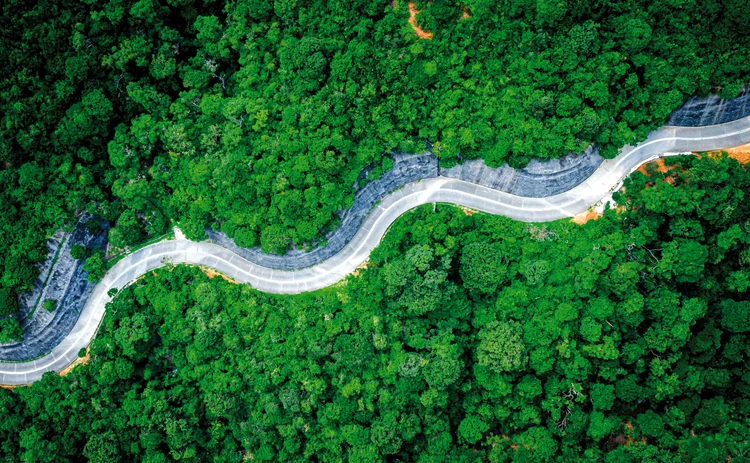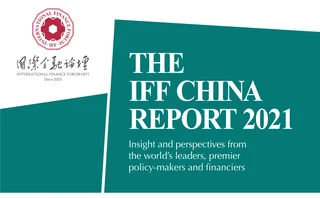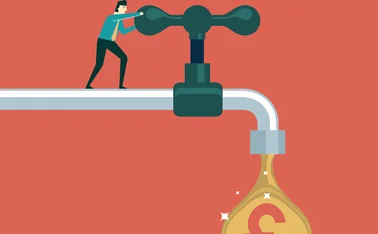
The road to green recovery


The Covid-19 pandemic has had devastating social and economic impacts on the countries along the Belt and Road Initiative (BRI). According to projections by the International Monetary Fund (IMF), BRI countries’ combined GDP will contract by 2.5% in 2020. But the IMF projects BRI countries to grow 6.5% (China 8.1%) in 2021 and 5.5% (China 5.8%) in 2022. These projections are based on the assumption that countries will maintain social distancing in 2021, although it is expected that, with expanding vaccination programmes and improving treatments, the intensity of social distancing will relax over time. By the end of 2022, the pandemic will be under control globally. Recent news on vaccine development and roll-out seems to support this assumption.
However, to achieve this V-shaped recovery, BRI countries must keep fiscal and monetary policies accommodative, support businesses and job creation, invest in infrastructure, and protect poor and vulnerable households. Moreover, recovery packages should address the need for sustainable development in the long term and promote green transition.

The BRI countries combined account for 63% of the global population, 47% of global GDP (in purchasing power parity terms), 55% of global annual carbon dioxide (CO2) emissions, and 68% of the global population suffering from particulate matter 2.5 (PM2.5) air pollution that exceeds World Health Organization guidelines. Thus, green transition and development are critical for BRI countries and the world. In fact, there would be no global sustainable development without green transition in BRI countries.
Shifting sands
BRI countries have intensified efforts to promote a green transition in recent years by improving energy efficiency, investing in renewable energies, reducing CO2 emission intensity, controlling pollution and protecting biodiversity. For instance, in the past 15–20 years, BRI countries’ energy consumption and CO2 emissions, per unit of real GDP, both declined by more than 20% (China’s by more than 40%).
More and more BRI countries are placing green transition at the top of their development agendas – and China is a good example of this. China’s share of power generation by renewable energies increased from 17% in 2000 to 28% in 2020. China now aims to have CO2 emissions peak before 2030 and achieve carbon neutrality before 2060. Other BRI countries with a carbon neutrality target include Hungary (2050), Maldives (2030), Nepal (2050), Slovakia (2050) and Singapore (the second half of this century).
Despite the progress, BRI countries still have a long way to go in green transition. For instance, their energy consumption per unit of real GDP is still 40%–50% higher than the average of the Organisation for Economic Co-operation and Development countries, and CO2 emissions per unit of real GDP are 80% higher.
BRI countries’ share of fossil fuels in total primary energy consumption is still as high as 89%, and power generation by fossil fuels still accounts for more than 70%. According to the International Energy Agency’s (IEA’s) Sustainable development scenario, by 2040, the share of fossil fuels in total primary energy consumption globally must be reduced to 56%, and the share of power generation by fossil fuels reduced to 24%.
Among the 60 countries with the most serious PM2.5 air pollutions globally, about half are from BRI countries. Furthermore, considering their need for future economic development without changing the growth model, their CO2 emissions and other pollutants will continue to rise rapidly.
More and more BRI countries are placing green transition at the top of their development agendas
Stronger policies
To further promote green transition and development, BRI countries should strengthen policies in the following six areas:
1. Change the growth model and improve the quality of growth. The most important act is to shift from resource-driven to innovation-driven growth. BRI countries should also promote the circular economy and raise the efficiency of resources use.
According to a recent report of the Intergovernmental Panel on Climate Change (IPCC), to achieve the goal of keeping the global temperature rise well below 1.5º Celsius above the pre-industrial level, by 2030, global CO2 emissions must be reduced by 40% from 2010 levels and, by 2050, all countries should achieve carbon neutrality. Global sustainable development requires more and more BRI countries to set appropriate carbon-neutrality targets.
2. Strengthen environmental protection legislation, control pollution and emissions, and do not repeat the old way of ‘polluting first and cleaning later’. Most BRI countries have environmental protection legislation – the key is to ensure the laws are effectively enforced.
3. Use market mechanisms to protect the environment. Market mechanisms can also make emissions reduction cost-effective. One important measure is to eliminate fossil fuel subsidies. According to IEA data, among the 25 countries with the highest fossil fuel subsidies in 2019, 18 were BRI countries.7 Saved fiscal resources from eliminating fossil fuel subsidies can be used to subsidise renewable energies. Despite significant reduction in the costs of renewable energies over the past 10 years – for example, the long-term unit cost of solar power declined by 80% and wind power by 30%–40% – these new energy sources require very high initial investment, and thus require government support.
Market mechanisms could also be used to introduce a carbon tax and cap and trade. More and more nations are developing carbon markets, including many developing countries such as China, India, Thailand and Kazakhstan. Several Southeast Asian countries are also planning to develop or are in the process of developing carbon markets, such as Indonesia, the Philippines and Vietnam. But, overall, carbon market development is still at a nascent stage in most BRI countries.
4. Promote green investment. According to a simple extrapolation of an Asian Development Bank study, over the next 10 years, BRI countries’ annual infrastructure investment needs amount to $2.3 trillion. Ensuring these investments promote green transition and development is critical. This requires investing in renewable energies, and green transport, agriculture and technologies.
5. Develop green finance. In most BRI countries, public resources are insufficient to meet demand. Developing green finance is an important way to attract private funding for green development. Green finance has developed rapidly in China in recent years; for example, China became one of the world’s largest green bond issuers in 2018 and 2019. But, in many BRI countries, green finance is still at an early stage.
6. Strengthen international co-operation. Most BRI countries are developing countries that may have not contributed a lot to global CO2 emissions historically, but will be affected disproportionately by climate change. Developed countries have an obligation to support them in their green transition. The Paris Agreement envisages annual funding support for climate mitigation and adaptation in developing countries to reach $100 billion by 2020, and even higher by 2025. Developed countries should fulfil their pledges despite the difficulties they face because of Covid-19.
There is huge potential for BRI countries to co-operate with each other on green development. China, as the leader and inaugurator of the BRI and the world’s second-largest economy, has an important role to play in promoting a green transition and development in BRI countries through policy dialogue, knowledge sharing, better infrastructure connectivity, capital flows and trade, and technological co-operation.
Only users who have a paid subscription or are part of a corporate subscription are able to print or copy content.
To access these options, along with all other subscription benefits, please contact info@centralbanking.com or view our subscription options here: subscriptions.centralbanking.com/subscribe
You are currently unable to print this content. Please contact info@centralbanking.com to find out more.
You are currently unable to copy this content. Please contact info@centralbanking.com to find out more.
Copyright Infopro Digital Limited. All rights reserved.
As outlined in our terms and conditions, https://www.infopro-digital.com/terms-and-conditions/subscriptions/ (point 2.4), printing is limited to a single copy.
If you would like to purchase additional rights please email info@centralbanking.com test test test
Copyright Infopro Digital Limited. All rights reserved.
You may share this content using our article tools. As outlined in our terms and conditions, https://www.infopro-digital.com/terms-and-conditions/subscriptions/ (clause 2.4), an Authorised User may only make one copy of the materials for their own personal use. You must also comply with the restrictions in clause 2.5.
If you would like to purchase additional rights please email info@centralbanking.com test test test







